Recent Articles
Popular Makes
Body Types
2017 Ford Focus: Pros and Cons
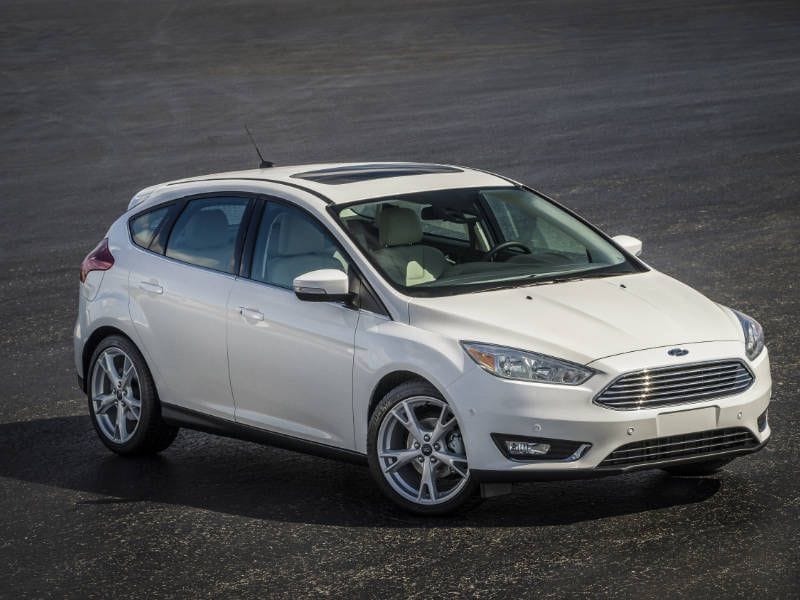
2015 Ford Focus sunroof shot ・ Photo by Ford
Even as the customer interest in compact cars seems to be shrinking, the Ford Focus remains one of the segment’s top sellers. It certainly helps that the Focus is available in two body styles, allowing customers to choose between a surprisingly stylish sedan and a sporty-looking five-door hatchback. Folks also can select from an extensive range of power plants, since the Focus offers four different gas engines or an all-electric propulsion system. Despite this, the Focus certainly isn’t the most technologically advanced car in its class. Our mission today: looking specifically at the pros and cons of the 2017 Ford Focus to see if the Blue Oval’s fun-to-drive compact lives up to its popularity.
Pro: Pricing and Value
The 2017 Ford Focus opens with an immediate advantage in one of the most important factors of the decision-making process: a low MSRP. The sedan opens at $16,775, about half the average transaction price of a new car today. And although all compact cars are relatively inexpensive because of their smaller size, the 2017 Focus also happens to be significantly lower-priced than the least expensive Honda Civic or Toyota Corolla sedans. In fact, the starting prices for both those rivals are more than 10 percent higher than for the Ford. The competitors are better equipped, that’s true, but the Focus does come with a SYNC infotainment system, a rearview camera, air conditioning, power amenities and integrated blind-spot mirrors.
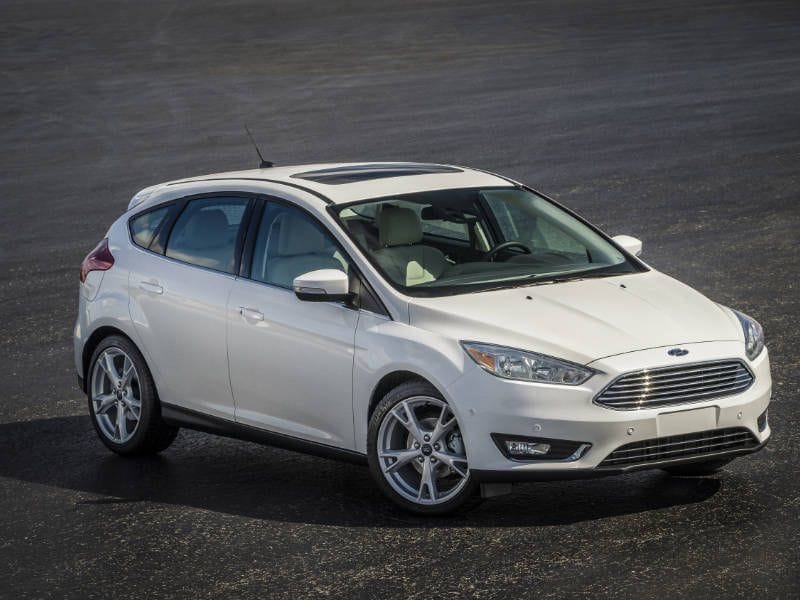
Photo by Ford
Pro: Powertrain Choices
The 2017 Ford Focus can be ordered with five different powertrains, providing something for just about everyone. The entry engine, for example, is one of the most powerful in the segment and can deliver 160 horsepower and 146 lb-ft of torque; that compares to just 130 horsepower and 128 lb-ft of torque in the Nissan Sentra. Focus drivers who prefer more fuel efficiency can opt for the 1.0-liter EcoBoost engine — a three-cylinder with EPA ratings of 28 mpg city/38 mpg highway/31 mpg combined — or they can skip gasoline entirely with the Focus Electric. This zero-emissions hatchback has an EPA-certified all-electric driving range of 115 miles. Ford also checks in with two high-performance setups.
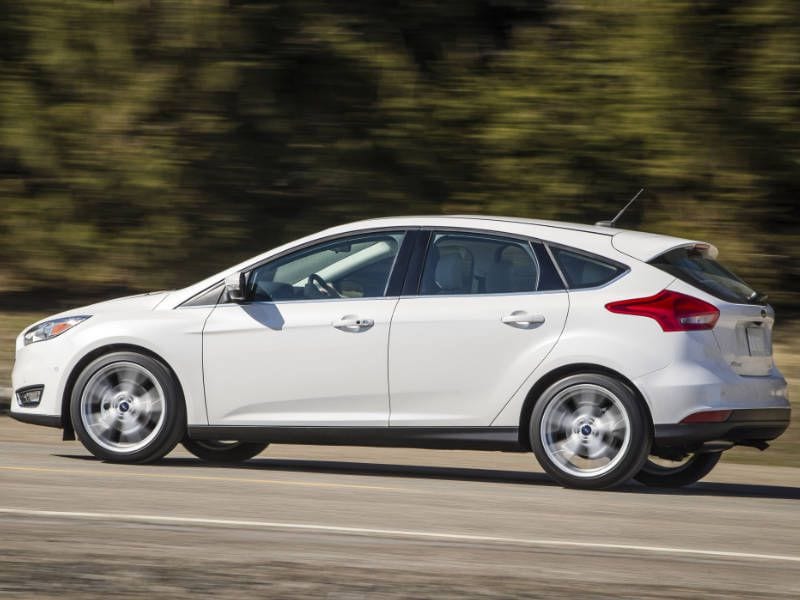
Photo by Ford
Pro: Two Hot Hatches
There’s a big interest in small cars for enthusiasts, and the 2017 Ford Focus can satisfy that demand with two hot-hatch models. Both the ST and the RS are the real deal, too, not just “regular” models with a few modest upgrades. Of course, they have more powerful engines —with the ST rocking a 2.0-liter turbocharged "EcoBoost" unit that makes 252 hp and 270 lb-ft of torque, and the RS supersizing to a 2.3-liter EcoBoost engine that kicks out 350 horsepower and 350 lb-ft of torque. They also have sport-tuned suspensions, Recaro racing seats, flat-bottomed steering wheels and other hi-performance cues. The RS further goes all-in with performance-focused all-wheel drive, dedicated “Track” and “Drifting” modes, and an aggressive aero upgrade.
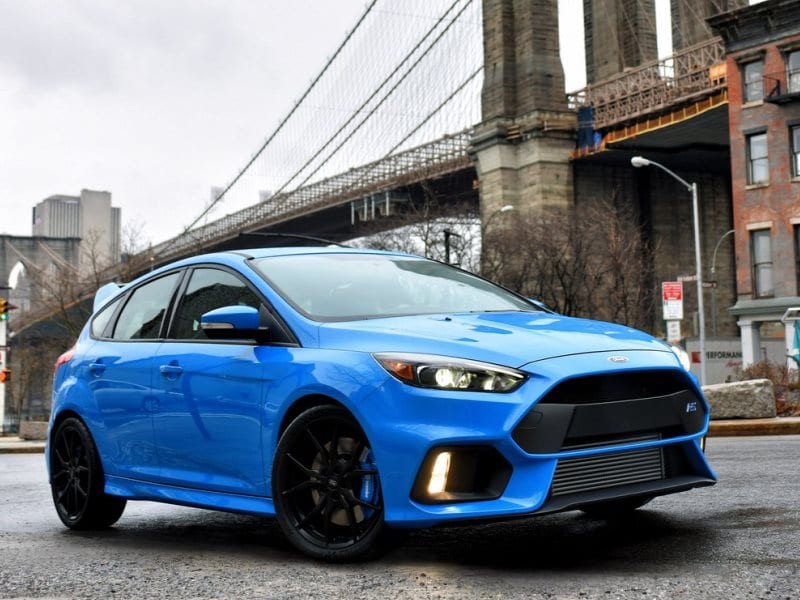
Photo by Ford
Con: Safety Ratings
First, the good news: The 2017 Ford Focus received the maximum five-star overall rating from NHTSA, while also providing two of the agency’s “recommended safety technologies.” Further, beyond those tech resources — a standard rearview camera and optional lane-departure warning — the Focus can be configured with a blind-spot monitor, rear cross-traffic alert, active parking assistance and lane-keeping assistance.
Results from the IIHS, however, weren’t quite so impressive. The sedan didn't manage a top score in the small-overlap front-impact crash test, and it doesn’t offer the required front crash-prevention tech for Top Safety Pick status. (The Focus hatchback hasn’t been submitted for IIHS testing, but it has the same safety features.) When you consider that Honda, Hyundai, Kia, Mazda, Nissan, Subaru, Toyota, and Volkswagen all offer Top Safety Pick compacts, this is a pretty glaring omission.
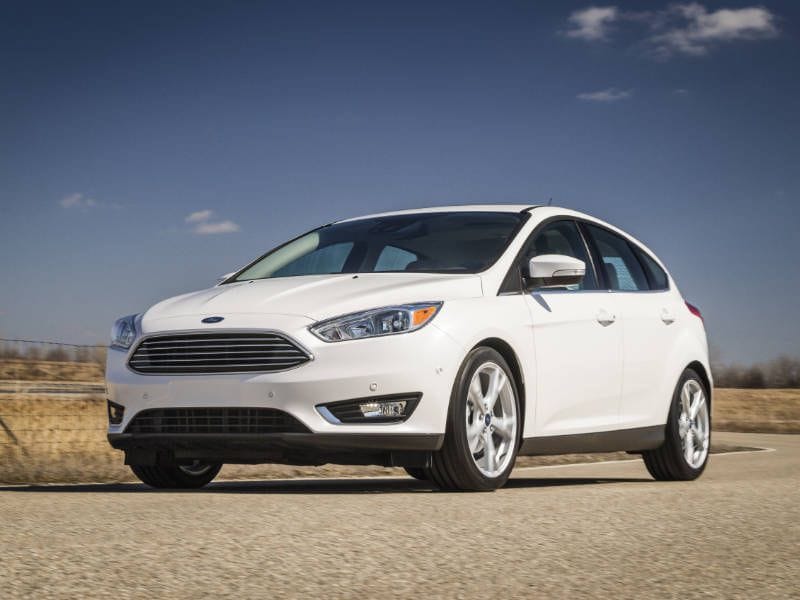
Photo by Ford
Con: Cabin and Cargo Space
Regardless of their diminutive footprints, many compact cars offer a fair amount of room for both passengers and cargo. The 2017 Ford Focus, though, ends up making some sacrifices for its stylish exterior appearance. The Focus has noticeably less passenger volume than some key rivals, and its rear-seat legroom is particularly tight. Nor can the Ford match the segment leaders in terms of overall hatchback carrying capacity. With those measures being especially important in this segment, the Focus’ drawbacks here aren’t quite balanced out by its benefits — which include superior front-seat legroom (43.1 inches) and a strong rating for hatchback cargo space behind the rear seats (23.2 cubic feet).
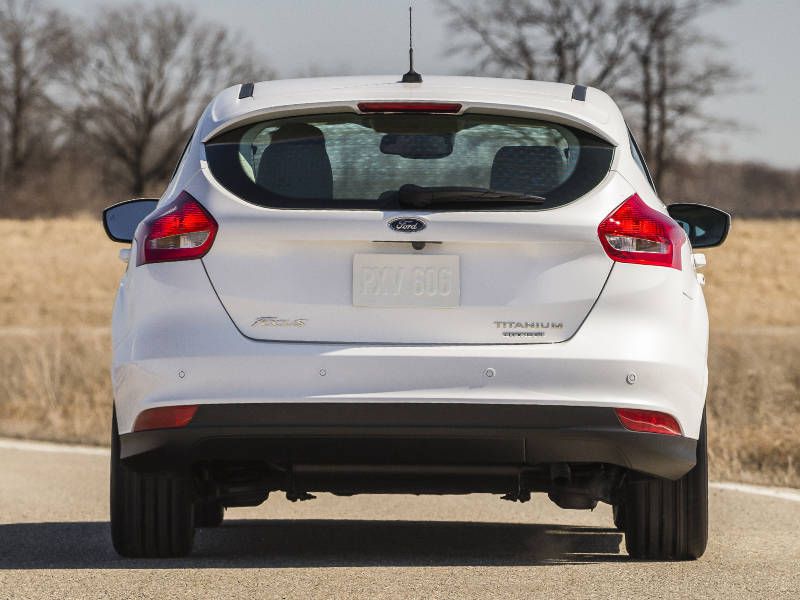
Photo by Ford
Pro: Luxury Features
Ford’s “Titanium” trims are the luxury range-toppers for most of its products, showcasing serious luxury cues and sophisticated styling elements. In the 2017 Focus Titanium, that means such upscale features such as leather-trimmed and heated front seats with eight-way power adjustability for extra comfort. The steering wheel is wrapped in leather and heated as well, and a leather-wrapped gear-shift knob and push-button ignition also increase the cabin’s upscale ambiance.
Outside, customers can look for dramatic headlight enhancements that include signature LED accents and chrome bezels; chrome also sparkles on the car’s beltline moldings. Foglamps, daytime running lights, and 17-inch aluminum-alloy wheels are among the Focus Titanium’s finishing touches. All of the Focus technologies discussed elsewhere are available here, too, though the sport-focused gear remains limited to the ST and RS.
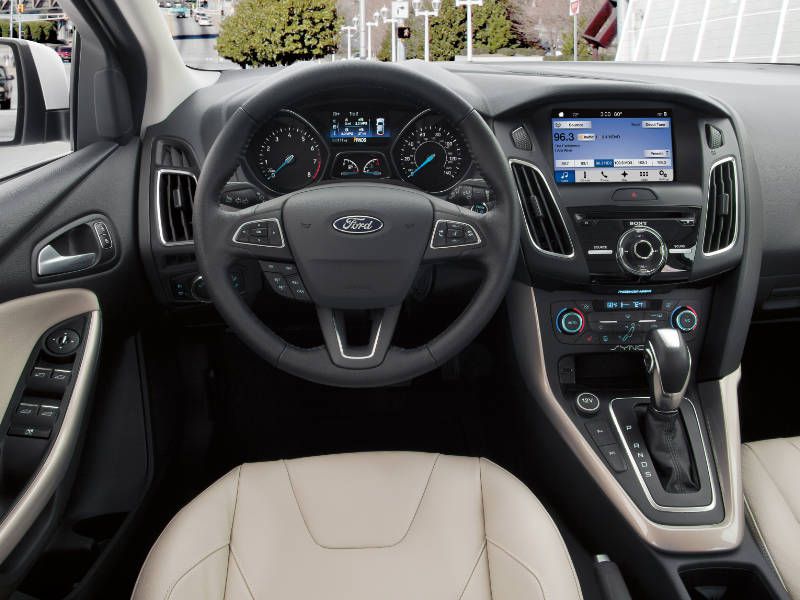
Photo by Ford
Pro: Infotainment Technology
Just to be clear, at this stage in the evolution of the automotive infotainment system, we can’t give a “pro” rating to a vehicle unless it furnishes the latest Android Auto/Apple CarPlay smartphone integration — which the 2017 Ford Focus bundles with its SYNC 3 technology. This is the next-gen version of the Blue Oval’s voice-recognition system, and along with much-improved functionality, it also serves up an 8-inch touchscreen, access to many smartphone-style apps, navigation and the ability to benefit from Wi-Fi updates from Ford. Meanwhile, audio lovers can enjoy a 10-speaker Sony sound system, HD Radio, and SiriusXM satellite radio. The standard infotainment setup, with previous-gen SYNC technology, also is quite competitive and even has a subscription-free automatic crash-notification function.

Photo by Ford
Pro: MyKey Teen-Driving Technology
Customers with young drivers in the family will be happy to know that the 2017 Ford Focus features Ford's MyKey system as standard equipment. Designed to encourage safer habits in younger, more inexperienced drivers, MyKey allows owners to set limits on certain vehicle functions, such as to keep the audio volume at a reasonable level or prevent the car from exceeding a given speed. The system additionally can be set to prevent the vehicle’s driver-assistance technologies from being turned off, including the “do not disturb” function for hands-free text messaging. MyKey also mutes the audio system entirely until the front-seat safety belts are engaged, and it can activate the Focus’ low-fuel warning earlier, giving the driver more time to find a gas station.
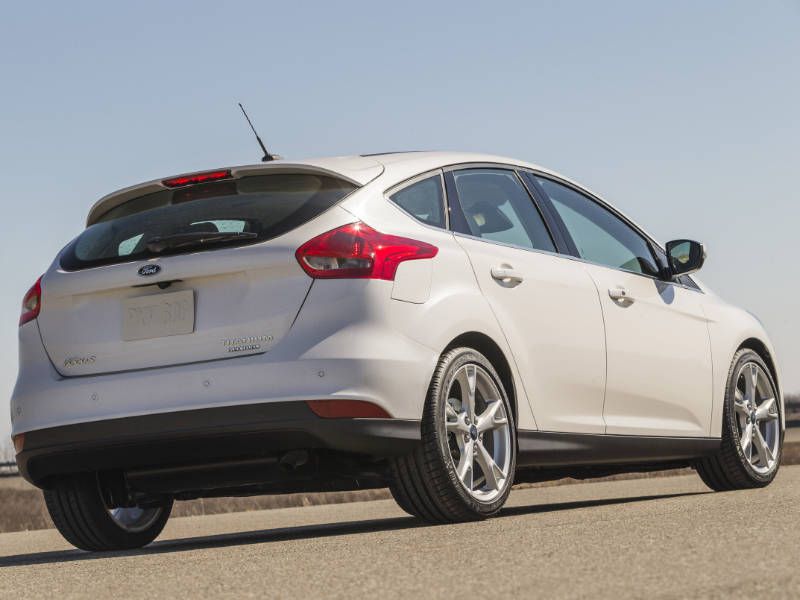
Photo by Ford
Pro: Styling
Even as some rivals have gone overboard with intricate lines and baroque design cues, the 2017 Ford Focus keeps its cool with a clean, athletic look. Up front, the car’s grille, lower intake, and fog-light pockets all work to widen the vehicle’s stance. Also sharp is the subtle sculpting on the hood and flanks, perfectly complementing the swept-back headlights and large, wraparound rear lights. It’s worth pointing out, too, that the Focus sedan is as attractive as the hatchback—something that can’t always be said of other compact lineups. Enthusiasts should remember that the Focus ST and RS do wear some exotic hot-hatch adornments, from unique grilles and body kits to distinctive center-mounted exhaust outlets.
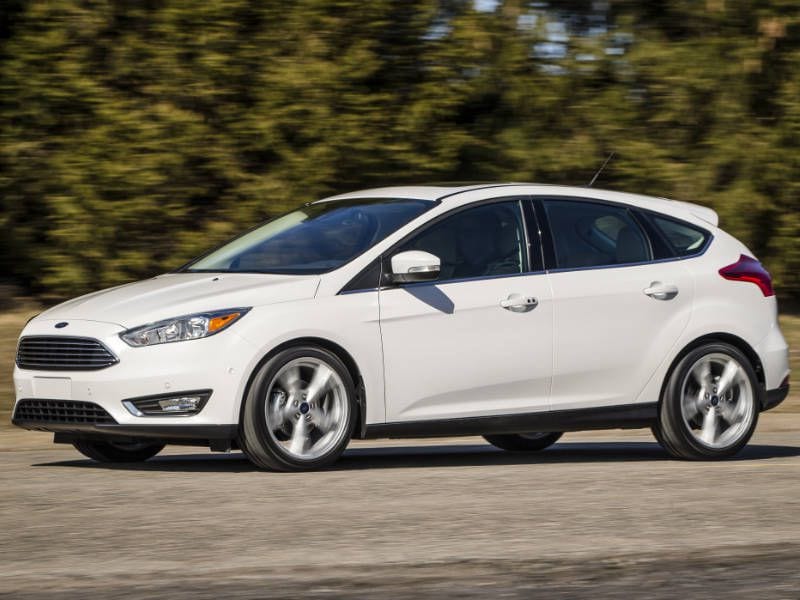
Photo by Ford
The Verdict
Tallying up the 2017 Ford Focus pros and cons, we see more positive than negative traits. With cutting-edge smartphone integration, two performance models, and some nifty teen-driving technologies, the Focus lineup supplies content that’s not available in many of its rivals. That said, those two “cons” did come in two relatively important categories — cabin space and safety ratings. Furthermore, most models' fuel-efficiency ratings also leave something to be desired.
Still, we can give the 2017 Focus a thumbs-up for owners who don’t demand the highest-possible safety grades and remind them that an all-new Focus is scheduled to debut sometime in 2018.
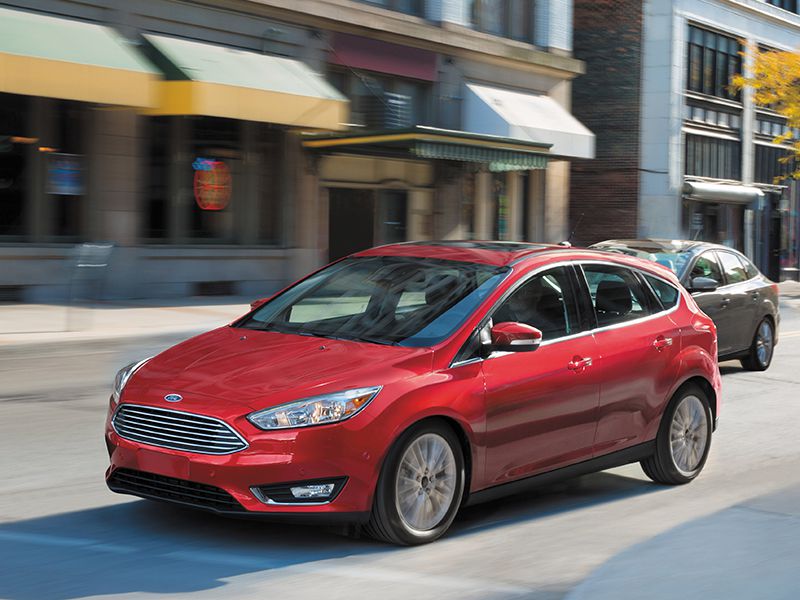
Photo by Ford